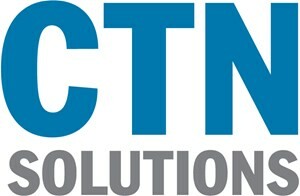 It’s true that advancements in technology has been front page news as long as humans have been printing newspapers, but nowadays there are so many innovations that not even industry professionals can keep track of every one. It also has an effect on the perception of what technology means to people, as the wheel, the lever, the fork, every object that we take for granted, was once a brilliant invention/innovation. One aspect of the human experience that is often overlooked in technological discussion is the makeup of how we live; more specifically, what technological innovation and invention will mean to the makeup of tomorrow’s cities.
It’s true that advancements in technology has been front page news as long as humans have been printing newspapers, but nowadays there are so many innovations that not even industry professionals can keep track of every one. It also has an effect on the perception of what technology means to people, as the wheel, the lever, the fork, every object that we take for granted, was once a brilliant invention/innovation. One aspect of the human experience that is often overlooked in technological discussion is the makeup of how we live; more specifically, what technological innovation and invention will mean to the makeup of tomorrow’s cities.
Recently, The University of Pennsylvania’s Institute for Urban Research, alongside the Consortium for Technologies for Safe and Efficient Transportation held a talk, where city planners, a renowned engineer, and a representative from the U.S. Department of Transportation (DOT) discussed the future use of robotics and automated systems in city infrastructure. “We are trying to leverage what he have today in terms of information technologies and think about how we can better improve safety and efficiencies in the transportation domain,” one of the presenters, Dr. Dan Lee, the director of the GRASP (General Robotics Automation, Sensing, Perception) program at UPenn said.
Much of the talk was focused around the transportation infrastructure, with each panelist outlining the problems and likely solutions that will be posed both by new and emerging technologies. Since the public’s perception is only to manage this innovation in a way where it doesn’t interfere with their lives, scientists like Dr. Lee have a relatively unrestricted path toward progress-intensive automation systems.
Automation in the automotive sector has been around for some time (think cruise control), but more is to come, with many experts suggesting that work is being done on incorporating driverless cars to the equation soon. Thus far trials are making progress, but haven’t been able to get the technology to cooperate enough to make it a viable reality presently. Although we’re pretty certain it will be in the near future.
Just recently, a technology startup, has developed what will be the first commercially available “advanced driver assisted system.” The San Francisco-based company, Cruise Automation Inc., is offering its first ADAS device, called the “Cruise PR-1” which uses sensors and data to understand the immediate surroundings of a vehicle in order to operate and navigate the car. The technology is capable of quick adjustments in speed, braking, and steering, but requires someone to be at the wheel at all times. The company states that while major players in the automotive industry are trying to come up with plans to build the world’s first autonomous car, this solution will bridge the current strategy with those products that will take some time to completely develop.
Roads filled with automated robot cars is one concept that most people understand, but there are other aspects of the “smart city” that some people don’t expect. Things like lamp post with built in Wi-Fi and that dim when noone is around, or traffic lights that communicate with cars and govern speed to prevent accidents, or a city app that allows residents to report on graffiti, potholes, abandoned cars, rodents, debris etc.. that they find, are all things that can be found in a smart city.
The idea of a “smart city” is very appealing for city planners and developers; and likely will be for the citizens of those cities. With the Internet of Things beginning to come to fruition, and expecting to grow by nearly 1000% in the next five years, it’s no surprise that more can be controlled through automation; fueling this trend. Examples of this already at work include, Real-Time power monitoring in Barcelona, water control systems in Copenhagen, and the promise of free public Wi-Fi in Kansas City. There are dozens more in development and soon to be hundreds more.
The future is here for city planners. By analyzing the data that they get from these connected systems they they will be able to figure out what’s best for city traffic, utilities, and overall urban development. The more technology becomes integrated with the systems we depend on, the more these systems will need to be monitored and managed to ensure complete functionality. The city of the future is on the horizon, what do you think it will look like? Add your thoughts in the comments.
